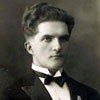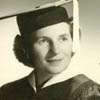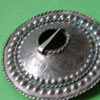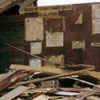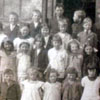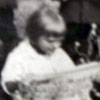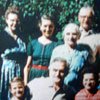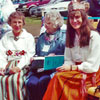Silbermans of Barons
The following is written by their grand daughter, Lillian Munz, in November 2006. Much of the material is from two books: 'Juri's Children', 1989, by Barbara Gullickson, and the Barons History Book, titled "Wheatheart of the West", 1972.
Barons Pioneers, Martin and Lisa Silberman, lived a long and adventurous life. Lisa's parents Jacob and Mari Erdman were 8 and 10 years old when they walked from Estonia to Crimea, a distance of 1,500 miles in 1861. About 70 Estonian families settled in villages vacated by the Crimean War. When they grew up, Jacob and Mari Tint married in Crimea and raised their nine children in Targhan, Crimea, but 40 years after arriving in Crimea, they emigrated to America (Dakota) in 1901. Three of their daughters were married by this time.
The Tsar was conscripting young men for the army and the young Estonians wanted a freer life. Lisa was 20 years old in 1901 when she left her homeland and sailed 3rd class with her family to New York. The Erdmans bought land in South Dakota, where several Estonian families had settled ten years earlier, but life there was too harsh so the Erdmans and many other families headed west after only one and a half years in America. Grandma could sing The Star Spangled Banner when she was 90.
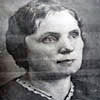 Lisa's family travelled by train with farm animals and equipment in other box cars to Lethbridge and then by horseback to the Barons area where land had been procured by a scouting party consisting of John Kewe, Jacob Erdman, Gus Erdman, Anton Kulpas and P Lentsman who trekked out west the year before to prepare for the immigration of their families and friends.
Lisa's family travelled by train with farm animals and equipment in other box cars to Lethbridge and then by horseback to the Barons area where land had been procured by a scouting party consisting of John Kewe, Jacob Erdman, Gus Erdman, Anton Kulpas and P Lentsman who trekked out west the year before to prepare for the immigration of their families and friends.
In 1904, Jacob and Mari Erdman tilled the prairie sod and built a house west of what was later called Barons. After working as a housemaid from 1903 to 1907 in Lethbridge and Medicine Hat, 24 year old Lisa met Martin Silberman in Medicine Hat. Martin was born west of Tartu, Estonia, in 1878, in the area of Kalani, and was raised on a farm with five sisters and two brothers Hans Silberman who became a well known doctor in Estonia, and Jaan who continued to farm the family land.
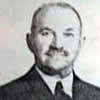 Martin became involved with those who were working for Estonian Independence, and when things got rather dangerous, he decided to leave his homeland and sail for the "New World". He took a train to Medicine Hat where an Estonian Lutheran minister, Rev. Sillak, organized a young adults group Estonians in the Medicine Hat area, among whom was Lisa Erdman.
Martin became involved with those who were working for Estonian Independence, and when things got rather dangerous, he decided to leave his homeland and sail for the "New World". He took a train to Medicine Hat where an Estonian Lutheran minister, Rev. Sillak, organized a young adults group Estonians in the Medicine Hat area, among whom was Lisa Erdman.
Rev. Sillak had placed an ad in the Estonian papers to the effect that anyone wanting to emigrate to Canada, should get on a boat that landed in Halifax. Then they should board a train for Medicine Hat. From there they searched out homesteads and CPR land.
Martin went further west to work in Exshaw at the cement plant as a blacksmith for a year to earn money to get married and start farming in the Barons area. In 1907 Lisa and Martin were married in Barons in a Lutheran ceremony. The wedding festivities lasted for three days.
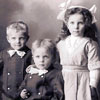 Martin and Lisa's first home was a sod hut three miles south of the village. Daughter, Helmi, was born on the farm in 1908. Twins, Ernest and Walter, arrived in 1909 with the help of Mari, Lisa's mother. Three children within two years! Good water was one problem. At first it was obtained from Allen's well, several miles away. Later, water for household needs was hauled by wagon from the irrigation lake named Keho Lake, one mile from the farm. The well water pumped by a windmill on the farm yard was too alkaline.
Martin and Lisa's first home was a sod hut three miles south of the village. Daughter, Helmi, was born on the farm in 1908. Twins, Ernest and Walter, arrived in 1909 with the help of Mari, Lisa's mother. Three children within two years! Good water was one problem. At first it was obtained from Allen's well, several miles away. Later, water for household needs was hauled by wagon from the irrigation lake named Keho Lake, one mile from the farm. The well water pumped by a windmill on the farm yard was too alkaline.
The coal stove and furnace in the basement required coal being hauled from the mine in Lethbridge. Coal oil lamps provided light in the long winter evenings The land around Barons was very flat with no native trees and no river closer than ten miles. Prairie fires were common. A wide plowed strip around the shack kept the flames from the prairie grass roof.
The next year a two room wood house was built across the road. Wood was hauled from Claresholm. Hundreds of caragana, maple and poplar trees were planted around the large farm site as a wind break because in southern Alberta there is always a wind. A group of fir trees grew tall at the SE corner of the farm yard. About eight years later a big two storey house was ordered from the Eatons catalogue and all of the pieces, even the fireplace for the dining room, was shipped out by CPR and assembled on the farm. A grand four bedroom house now stood facing the irrigation lake to the east.
Several square miles of rich earth was cleared of stones and buffalo bones, and then farmed by Martin and his hired men. A long barn was built to house the many work horses. A special shed was built to hold the harnesses and other equipment used in plowing and harvesting the grain. A steam engine was used to separate the grain from the straw which formed a huge straw pile that was essential for the cattle in the winter time.
The train tracks were laid through Barons with the help of Chinese labour in the early 1909 and the row of grain elevators soon became a landmark - all nine of them. Horse drawn wagons brought the wheat, rye and barley to the elevators for the train to transport to Calgary or Lethbridge to the flour mills. For twelve years of married life, the Silbermans developed their large farm operation, covering several square miles.
Then, when Estonia did become independent after WW1, the family packed up and left Canada. From 1919 to 1932, the Silbermans lived in Tartu, Estonia. Estonia had gained liberation from the Russian domination that had ruled for hundreds of years. Martin wanted his children to receive high school and university education there, where his relatives lived and where schools were more firmly established. Their Barons farm was turned over on a 'lease to own' arrangement to Martin's niece Linda (Jurman) and her husband Gus J. Erdman, parents of Karl, Ilmar and Evelyn. While in Europe, in the early 1930's Walter married Lea Weiler in Estonia (1933) and Helmi married Emmerich Munz in Austria in November, 1933.
During the dirty thirties, black dust storms and low grain prices made farming a miserable experience, but farmers grew their own food, paid farm help only one dollar a day and somehow survived. When the dirty thirties made land payments impossible, the Silbermans returned from Europe and reclaimed their farm.
The two young couples came to Canada almost immediately because the European political scene was not too peaceful, a few years before WW II. The twins changed their surname to Silverton in 1936.
Walter and Lea built a house in the village in 1943 and lived in Barons until the early 1960's when they moved to Victoria. Helmi left the farm and bought a house in the village in 1948 . She then went on to university, receiving her BA in Seattle, and her MA in art at Columbia University, N.Y., when she was in her late 40's. She later lived in Edmonton and Calgary. Her children, Lillian, Albert and Martha, finished school in Barons and went on to university in Edmonton. Lisa was proud that all of her children and 8 grandchildren had university degrees. She herself had reached grade four in Crimea.
Lisa enjoyed handiwork. She hand knotted a Persian style carpet 10 x 12 for the living room while in Estonia. She was always busy with crochet hooks or making dolls from old stockings. In her 80's she took up oil painting for 10 years. She was proud to be Canadian and won a huge Canadian flag for writing a poem for a contest in Calgary about her feelings about Canada.
Walter did the farming for his parents until the farm was sold to the Konynenbelts of Nobleford . Lisa and Martin continued to live on their farm until 1948 when they moved into the village of Barons. By then mechanized farming was in full swing. Combines worked until after dark. Trucks hauled wheat to the elevators. One hundred head of cattle were grazed near the lake and brought to Lethbridge for sale. One year, one hundred chickens were raised by Helmi, and brought to restaurants in Lethbridge ready for the kitchens. Sold for $1 each, the money went for piano lessons for the children.
Martin Silberman did not socialize with the local Estonians, nor did he celebrate the customs or traditions of his homeland. There was a strong feeling in the war years and afterwards that immigrants should try to be "Canadian" and that English should be spoken to the younger generations. Stories of the "Old Days" were not commonly told in the Silberman household. The grandchildren spoke no Estonian, though their grandparents spoke Estonian among themselves all the time.
On one occasion in the late 1940's, Walter's family and Helmi's family drove to Eckville to the St. John's Day celebrations. It was a long drive over gravel roads. The younger generation didn't know the Estonian language, so the bonfire was the only strong memory of the event.
Ernest Silverton practised law in Vancouver, served with the Canadian Intelligence Corps in England from 1941 to 1946. He was a clerk in the Neuremburg Trials in Germany. After his return to Vancouver he married Julie the daughter of an Estonian immigrant Michael Walters originally from Saarama. The two Estonian bachelors, Michael and Martin had worked together in Exshaw in 1906 but didn't keep in touch. When their children, Ernest and Julie, met in 1941, in Ocean Falls, B.C. and married in 1948, it was a wonderful co-incidence. Julie was director of nurses at the Vancouver General Hospital at the time of their marriage. Ernest later moved with his wife and two daughters, Giuliana (now a gynocologist in Los Angeles) and Shelley to California where he practised law. He passed away in 1991 in Pasedena.
In 1948, Martin sponsored a nephew, son of his brother Hans, to come to Canada after the war. Olaf Silberman studied medicine in Edmonton and became a bone specialist in Eston and Etonia, Saskatchewan. He died of a heart attack while in his early 40's. Olaf's sister Agda from Tallinn and her family visited Alberta in 2004. As guests of Martha Munz-Gue, their cousin, they toured Agda's uncle Martin Silberman's old farm and tried to envision how the Canadian pioneers lived one hundred years ago while their own country was still under the rule of the Tsars.
Martin lived a quiet life in Barons for eight years and died in Lethbridge in 1956 at the age of 79. Almost 20 years later, Lisa died in Calgary in 1975 at the age of 93. They leave 8 grandchildren, and sixteen great-grandchildren and ten great-great grandchildren - that's 34 progeny living in western Canada and USA (as of 2006).
With this family, the "Estonian Heritage" was not evident in everyday life, except that the pioneer generation spoke Estonian at home among themselves and with their own children. In the 1920's, 1930's and 1940's for birthdays and Christmas all of the Estonians in the Barons area gathered for a Sunday afternoon party at one of the farms.
In more recent years, the "Erdman Reunions" have become an annual event in Barons or Lethbridge. Sometimes over 40 people would gather for a picnic, entertainment and church. It is the third and fourth generations now that attend these gatherings, and Estonian is not spoken. It is more of a "family gathering" than and ethnic reminder.
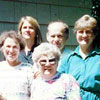 The Silvertons and Munzes grew up and finished high school in Barons. All of the grandchildren went on to University, as did their parents. The Estonians were very keen about higher education.
The Silvertons and Munzes grew up and finished high school in Barons. All of the grandchildren went on to University, as did their parents. The Estonians were very keen about higher education.
There were nine grain elevators in the pioneer days of Barons. One by one they were demolished in the last decade of the 20th century. The wood was buried in nearby fields.
These icons of the prairies were familiar landmarks for 80 years.
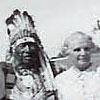 On a trip to Banff in the 1950's Ernest (Silberman) Silverton sugggested that the two "pioneers" have their photo taken so the Chief very kindly permitted us to stand with him for this photo.
On a trip to Banff in the 1950's Ernest (Silberman) Silverton sugggested that the two "pioneers" have their photo taken so the Chief very kindly permitted us to stand with him for this photo.
Like many of the pioneer Estonians, all of the Silberman children, and all of the grandchildren and most of the great grandchildren have at least one university degree.
There are teachers, a lawyer, business people, engineers, scientists, a doctor, a nurse, artists, musicians, environmentalists among the Silberman descendants. None of the descendants have remained in the Barons area.
There has been very little interaction between the Barons Estonians and the settlements of Estonians in Stettler and Eckville.
The effort to become "Canadian" seemed to be important. The younger generations did not maintain the language or ethnic customs of their grandparents, generally speaking.
Lisa enjoyed writing poetry:
Counting my Blessings (1960)
Although the years are smothering me
My heart feels young and peppy
And living with my family
I am content and happy.
I thought I'm youthful for my age
But this of course was error
And it was quickly straightened out
By one glance in the mirror.
I raised my babes in a one room house
With strictly rationed water.
I gathered cow chips for our fuel
And had no money either.
But now I live in a modern house
All drudgery avoided
And fuel and water all piped in
'Which nature has provided.
I feel quite proud and justly so
Of my posterity
There are nine young Canadians
With Varsity degrees.
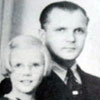 Walter Silverton b. 1909 in Barons d. 1982 in Victoria
Walter Silverton b. 1909 in Barons d. 1982 in Victoria
Lea Weiler (Oct 31, 1912- ) Silverton married in Tallinn, Dec. 30, 1933
Mae Silverton 1935 - (m. Boie Myhre)
Ernest Silverton 1941 - ( m Lorene Park)
Silvia Silverton 1939 - m. Malcolm Marshall of New Zealand.
Walter farmed his own land and his father and sister's land in Barons until 1964 (about 25 years) and then moved to Victoria where he built a house in Cadboro Bay.
Lea lives in Port Alberni. (2006 - age 94)
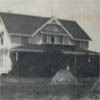 The Silberman farm house is located three miles south of Barons, a mile west of Keho Lake, an irrigation lake. The Barons area was not irrigated until very recently. The water flowed east to the Picture Butte area.
The Silberman farm house is located three miles south of Barons, a mile west of Keho Lake, an irrigation lake. The Barons area was not irrigated until very recently. The water flowed east to the Picture Butte area.
This house was ordered through the catalogue and constructed in 1917-18.
The Silbermans left to live in Estonia in 1919 and didn't return until the "dirty thirties", 1932.
Martin's niece, Linda (Jurman) Erdman, and her family, G.J. Erdman and three children Karl, Ilmar and Evelyn lived here for over ten years.
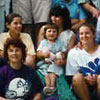 The annual Erdman reunions have been held in early July in conjunction with the parade and "sports day." Here are several generations of the Erdman descendants, 1998. Victor, Ralph, and Oscar Erdman are here - all nephews of Lisa Silberman. Lea Silverton and Elsie Erdman are here too.
The annual Erdman reunions have been held in early July in conjunction with the parade and "sports day." Here are several generations of the Erdman descendants, 1998. Victor, Ralph, and Oscar Erdman are here - all nephews of Lisa Silberman. Lea Silverton and Elsie Erdman are here too.
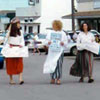 In 1998, three cousins wore Estonian costumes in the Barons parade to celebrate 95 years of Erdmans farming in the district.
In 1998, three cousins wore Estonian costumes in the Barons parade to celebrate 95 years of Erdmans farming in the district.
In costume are:
- Kelly Marshall (great-grand daughter of Lisa Silberman)
- Marilyn Johnson (grand daughter of Gus Erdman)
- Anita Gue (great-grand daughter of Lisa Silberman)
All three are descendants of pioneer Barons farmers.
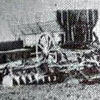 Martin Silberman farmed with teams of horses from 1906 until the mid 1930's. A large horse barn was built on the farm to shelter the animals. Hired men would help to do the work. Some of the hired men were Estonian bachelors who came out to the Canadian farms to earn money to buy their own farms.
Martin Silberman farmed with teams of horses from 1906 until the mid 1930's. A large horse barn was built on the farm to shelter the animals. Hired men would help to do the work. Some of the hired men were Estonian bachelors who came out to the Canadian farms to earn money to buy their own farms.
Huge steam "separators" were used to sift the grain from the bails. The straw was blown into large straw stacks for livestock to feed on in the winter time.
The Barons area was known as a "dry land farming area" with grain and livestock predominating as a source of income.
Later some limited success in oil revenues added to the economic base. Some of the descendants of original settlers still have "mineral rights" on their ancestor's land.
Barons school photo, in 1916 or 1917 At that time there must have been at least a dozen Estonian children in this group. The Silberman children are shown: Helmi, second row to the left. Ernest: third from the right in the second row. The three Kotkas children and the Kulpas children would be there somewhere. This brick school was located where the community hall is now.
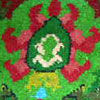 This is a small portion of a hand-knotted wool carpet that Lisa Silberman made while in Estonia during the 1920's. She brought it to Canada and it has moved from the Silberman farm, to Edmonton, to Medicine Hat and to Calgary over the last 80 years. Her daughter Helmi designed the carpet on graph paper, and a loom was constructed in one of the rooms. It took over a year to knot this in the Persian style. The size is about 3.5 metres square. It seems that the pioneer Estonian women, though they worked hard in the house and yard, had a flair for handiwork which included cutwork table cloths, hooked rugs, crocheted bedspreads and handmade dresses and other clothing.
This is a small portion of a hand-knotted wool carpet that Lisa Silberman made while in Estonia during the 1920's. She brought it to Canada and it has moved from the Silberman farm, to Edmonton, to Medicine Hat and to Calgary over the last 80 years. Her daughter Helmi designed the carpet on graph paper, and a loom was constructed in one of the rooms. It took over a year to knot this in the Persian style. The size is about 3.5 metres square. It seems that the pioneer Estonian women, though they worked hard in the house and yard, had a flair for handiwork which included cutwork table cloths, hooked rugs, crocheted bedspreads and handmade dresses and other clothing.
Lisa Silberman's Pioneer Memories
(in her own words)
After we arrived in America, we still hadn't found a place to settle permanently. South Dakota was not to be our permanent home. J. Erdman, G. Erdman, A. Kulpas and P Lentsman, with John Kewe as interpreter, went by train from Dakota to Oregon to look for land. 1903
There they met a Finlander who knew that in Alberta, there was still good land available for homesteads, so the Estonian group travelled to Claresholm where they were met by eager land agents who drove them out eastward. Mr. Lentsman took the first available homestead, next to Ernie Allen's farm. Next was A. Kulpas, then Helena Watman, then Jacob and Gus Erdman, moving eastward. The men returned to South Dakota to sell what they had bought a year earlier.
They packed up our belongings and loaded them into railroad cars, in 1904. Horses and cattle went into box cars. We reached Lethbridge, unloaded, used wagons and horses and headed north to the Blaney area., later called Barons.
There were no trees or bushes for fuel so the children gathered buffalo chips. Grown ups cut the hay from prairie grass as there was a market for it in Lethbridge. There was a lumber mill in Claresholm. A big barn was built on the farm. We lived in that after the sod house, until a wood house was built.
After I was married, we had no drinking water on the farm site. The first well was an hour's walk from the house. Often I had to leave the three children with a severe warning, "God will see what you are doing." Walter asked, "Doesn't his neck get sore, looking down all the time?"
To cure diphtheria, I coated the children's throats with coal oil applied with a chicken feather. It seemed to work.
These are just a few of my memories from days long gone. (Lisa Silberman)
Registration of marriage: 1907
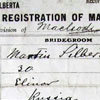 Martin was born in "Russia" as Estonia was called then.
Martin was born in "Russia" as Estonia was called then.
His parents were Hans and Tiio Silbermann.
Tiio was born a Jacobson.
Lisa was 25. Her parents were Jacob and Mari Erdmannn who were born in Estonia, but lived for 40 years in Crimea where their children were born.
Reverend Sillak, of Medicine Hat, signed this document as the officiating Lurtheran minister.
The date of the marriage was April 7, 1907.
Elinor was the old name for Barons.
Grandma Lisa's Recipes And other writings
(researched by Lil Munz, December 2006)
This is all about cooking - my memories of crimean/Estonian recipes. (by Lisa Silberman of Barons)
Stuffed Loaf
Here is one way to make stuffed buns. In one cup of flour put small teaspoon of baking powder, a teaspoon of butter, salt and mix. Then moisten with milk, mix it into a ball.
Filling: grind left over cooked meat. Chop a small onion and add that and pepper, salt and one or two raw eggs.
Roll out the dough into the shape of a bread pan. Grease the pan well. Place the filling in the middle and squeeze the edges together making a long shape. With a long spatula, lift the meat filled pastry into the pan, squeezed side down and bake.
Small stuffed buns are made the same way, except you shape the pastry into 4 inch circles and fill them with meat.
Cottage Cheese
We made cottage cheese ourselves from milk from our cows. It was different from cottage cheese that you buy in the stores. We could mix many eggs in it without it getting too liquid.
CHEESE POCKETS: half cup water, two eggs and enough flour to make a stiff dough. A little butter mixed in makes rolling out easier.
Roll the dough very thin. Cut it into squares. Fill each square with cheese and close edges. Boil in rapidly boiling water 6 to 10 minutes. Then drain water off. Add plenty of butter and roll around.
Filling of cottage cheese: 2 cups of cottage cheese, 2 eggs, salt. Mix well.
Serve Cheese Pockets with sour cream (and a bit of sugar, if you want it.)
Sult (Meat Jelly)
When an animal was butchered, then we made a kettleful of sult.
Meaty pieces of head, tongue (well cleaned) kidneys, knuckles, top part of tail and some tripe. This was boiled until the bones were loose and taken out. Add pickling spice, salt and pepper and boil up once more. Pour into bowls to cool and jell.
Meat Jelly was often eaten with a sour sauce made of vinegar, chopped onions, salt and pepper and sometimes a dash of sugar.
If the animal was a pig, then the intestines were taken out and cleaned for sausage. But the method defies description!!
Chicken was mostly boiled and the broth used for cooking rice.
Fish was always fried on a big frying pan, except for herrings.
Small sardines in Crimea were salted in laurel leaves and later eaten with boiled potatoes.
Macaroni Pudding
1 cup macaroni boiled soft and drained
Put a layer of macaroni and a layer of raisins alternately until the dish is full.
Beat two eggs and add half cup sugar and one cup milk and some flavouring like vanilla.
Pour over the macaroni and bake at 350 until firm.
Fruit Stew
Dried prunes, raisins, apricots, pears in equal amounts.
Soak over night. Boil with soaking water until soft.
Add sugar and boil up once more.
Add some cinnamon. Add a bit of cornstarch to thicken.
Biringi or Pirakad
1 pkt yeast,
1 tsp. sugar
1 cup warm water
Mix and after 10 minutes add some flour to it and let it rise for one hour.
Add one cup warm milk, 2 tablespoons of shortening, some salt and enough warmed flour to make a soft dough. Let it stand for one hour.
Filling: Ground meat - It could be left overs. If it is too dry add a raw egg. Add a chopped onion and salt. If using raw hamburger, fry it first.
Roll out dough and make small buns by filling dough with meat mixture. Bake at 400F for 30 minutes.
A larger meat filled sausage roll can be made the same way.
Sauerkraut Casserole
1 quart sauerkraut (add fresh cabbage if too sour)
1 small onion
half cup barley
one cup salted pork chops spread over top
Cover with water. Put on lid and cook in the oven for two hours.
Potato Stew
2 lbs beef boiled soft. Juice goes into the stew.
Two large potatoes, one large carrot, one large onion
Cut vegetables and add one cup of tomato juice or fresh chopped tomatoes. Use beef juice to boil vegetables with a bit of salt and pepper.
To thicken the juice, mix one tablespoon of flour with water and pour mixture over the vegetables and let it boil up.
When they are soft, add vegetables to the boiled beef.
Cabbage Rolls
One pound hamburger
2/3 cup cold water
½ cup rice flavoured with salt and pepper
small onion chopped well
Mix meat mixture by hand.
Wilt cabbage in boiling water
Fill leaf with meat mixture and fold edges into a package or roll. Put a cabbage leaf at the bottom of a greased baking dish to avoid scorching the rolls. Fill the pot with cabbage rolls. Pour enough tomato juice over to cover the rolls. Put a lid on the baking dish. Bake in the oven until fully cooked.
Salted Ham Baked In Pastry
15 pounds of ham
Set in roaster and cover with brown paper.
Paste: "chop" (cattle feed flour) mixed with water
Make a thick dough and cover the ham with this dough about one inch thick.
Bake the ham in a moderate oven for two hours or more.
Remove the pastry and feed it to the chickens. The ham will be moist and juicy.
Borscht
1 quart beef juice
1 cup tomato juice
1 small beet peeled and chopped
1 small onion
1 small potato
Enough chopped cabbage to get the right thickness.
Boil this mixture on the stove until vegetables are soft. Add a tablespoon of lemon juice or vinegar, as it should taste sour.
Add salt and pepper to taste. Eat with sour cream on top.
Large Pancakes (crepes)
Half cup flour
Half cup milk beaten in slowly
Add more milk until the mixture is like thick cream.
Add three eggs, a little at a time, beating until smooth.
Add more milk, if needed to keep the consistency.
Grease very hot frying pan. To test, put a spoonful of mixture on the pan. If the sides curl up it needs more milk.
Tip the pan to spread the mixture thinly over the entire surface of the pan. Cook until "dry". Flip the pancake and cook the other side.
Serve hot, stacked. Offer personal choice of fillings. Can be eaten with jam or fruit and rolled like a scroll. Whipped cream can be spooned on top.
Poem - Goodbye To Summer by L. Silberman age 79
Oh dear lovely summer, you are going too fast.
We love you and wish your kind visit would last.
You surely did miracles with our brown hills.
They 're green and snow water the riverbed fills.
I do have to hurry as summer's half gone.
What I started in spring should be finished and done.
The crops from the fields to granaries are hauled.
The cattle are fattened and the surplus is sold.
The vegetables washed and stored in the hold
So winter will be cozy and not very cold.
Then goodbye dear friends, I shall not go very far.
And I'll be with you as ever, the following year.
Calgary Herald Contest for Seniors - 1973
People over 65 years of age were invited to write about our Canadian flag. At age 91, Lisa Silberman who was living at the Bowview Lodge in Calgary, won first prize, a flag about five feet across.
We all should be glad to think that our ships sail the world waterways with Canadian cargoes of coal, lumber and wheat and our own Canadian flag fluttering from the masts. Before the new flag was issued, we had a borrowed flag. Our flag is beautiful in both colour and design.
It is a flag of peace as it has not been splattered with the blood of our young men.
So let's keep it clean!
Poem - Birthdays by Lisa Silberman age 91 - 1973
As birthdays are milestones
That mark our life's way.
I am stepping on a new one.
"Too many," I say.
I thank you dear youngsters
For wishing me well.
Your wishes are granted.
I still look quite swell.
To look back at my past years
I shall not now do.
Or look to the future
Oh, Grandma, it's not for you.
Just wait 'til the dear Father
Welcomes your hand
And upward you fly
To join great angel bands.
How to make home make cloth
(by Lisa Silberman)
When people started to domesticate wild animals they found that sheep were very useful. They could use the skin for clothing. It was very comfortable in the winter, but they needed something lighter for summer. Then they noticed that the wool loosened up in the spring and hung from their sides until it dropped. So they picked it up and twisted it into yarn, first by hand and then with spinning wheels.
Then they got the idea of weaving the yarn into cloth. In warm climates cotton was used to make cloth. Nowadays the scientists make chemical fibres from which many of our clothes are made.
To prepare the wool for weaving is a very complicated business. You have to card the spin it which takes months of work. Then you have to have equipment to take it off the spool of the spinning wheel when it is full. Then you dye the yarn, wash it and dry it.
Then you wind it into balls with a special tool. Then all of the small balls are connected together by using another "contraption" that hangs from the ceiling and is attached to the floor. Now you take this big roll of yarn to the loom.
There you must thread the linen warp through metal pieces. This takes about two days. After that you can start weaving. In a long day you can weave about three yards (less than 3 metres) of cloth.
Was it worth the trouble?
That was how we did it. Maybe the modern way is better.
Note: You needed a lot of wool for the woof to make a yard of cloth.
The spinning wheels were made by local carpenters.
Note: In Barons, Lisa had a spinning wheel which is now kept by her grand daughter, Martha MunzGue of Medicine Hat. (2007)
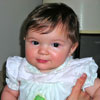 Martin and Lisa Silberman's great-great-grand daughter Hazel Gue, daughter of Kevin and Christine Gue who live in Edmonton. She is the latest member of the Martin Silberman/:Lisa Erdman family tree. Christmas, 2006
Martin and Lisa Silberman's great-great-grand daughter Hazel Gue, daughter of Kevin and Christine Gue who live in Edmonton. She is the latest member of the Martin Silberman/:Lisa Erdman family tree. Christmas, 2006

